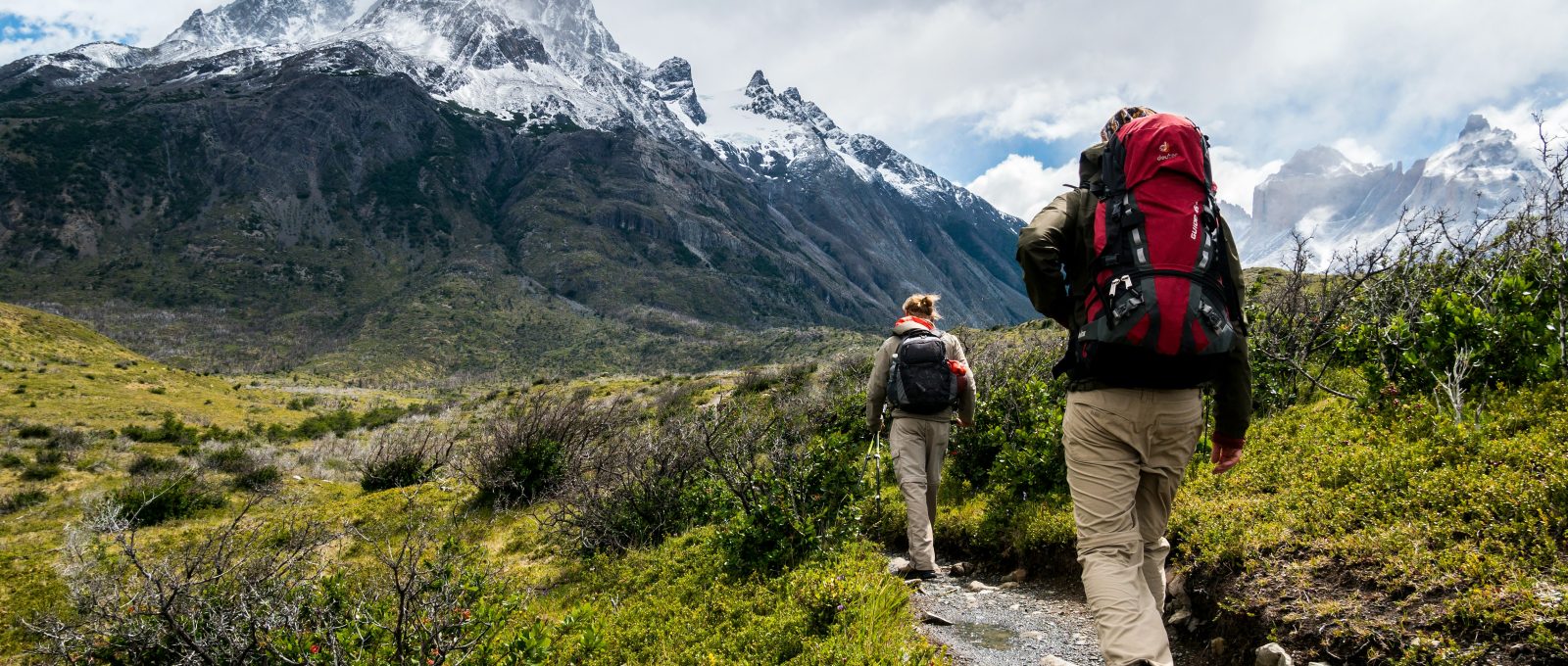Introduction
The thrill of a hike lies not just in following a pre-planned route but also in the unexpected turns and discoveries along the way. Sometimes, you find a hidden waterfall, a perfect picnic spot, or a breathtaking view just off the marked trail, tempting you to change your destination. Whether it’s sparked by curiosity, a change in weather, or a recommendation from a fellow hiker, altering your hiking destination can make your adventure more memorable. However, it’s important to approach such changes safely and wisely to ensure that your spontaneous decision enhances your experience without leading to potential risks. This blog will provide you with essential tips and considerations for modifying your hiking plans mid-trail, ensuring you can savor every adventurous moment safely.
Reasons for Changing Your Destination While Hiking

Navigation Difficulties
While maps and GPS devices are incredibly helpful, they aren’t infallible. Sometimes trails are not well-marked, or natural changes like fallen trees or washed-out paths can complicate navigation. When the trail you’re on becomes difficult to follow, or if you realize you’re off course, the need to recalibrate your destination becomes essential. Often, this is a safety measure, not just a mild inconvenience, especially in vast wilderness areas where getting lost can lead to serious hazards.
Unexpected Weather Conditions
Weather can change at the drop of a hat, especially in mountainous or coastal regions. A clear, sunny morning can quickly turn into an afternoon of heavy rain or even snow, depending on altitude and season. Such shifts can make continuing on the planned path dangerous or impossible, prompting a change of destination. Flooded trails, slippery conditions, or poor visibility can all serve as critical motivators for rethinking your hiking plans mid-trail.
Personal Preferences
Sometimes, the hike you set out to do just isn’t as enjoyable as anticipated. The terrain might be too challenging, or perhaps it’s simply not as scenic as hoped. Alternatively, a different trail you happen upon might look more interesting or suitable to your current mood and physical stamina. Hiking is as much about enjoyment and connection with nature as it is about reaching a specific destination. If your spirits and energy align better with a different route, then why not pivot to maximize your enjoyment?
Tips for Safely Altering Your Hiking Route
Assessing the Situation
Before changing your course, it’s crucial to stop and assess the situation comprehensively. Determine the reasons behind the need for a change—are they based on emergency, health, or comfort? Evaluate the risks associated with continuing on your current path versus those that might arise from an alternative route. Also, consider your preparedness for the new destination: Do you have the necessary supplies, and is it within a reasonable distance? It’s important to listen to your instincts and logical reasoning before diverting from your original plan.
Planning an Alternative Route
Once you’ve decided to change your destination, planning is your next step. Utilize a reliable map or GPS to explore alternative routes. Here are some steps in outlining a new plan:
– Identify any nearby trails or safe off-path routes.
– Estimate the time it will take to traverse the new route compared to your original plan.
– Ensure water sources and suitable spots for rest are accessible along the new path.
– Consider the terrain and weather conditions specific to the new route.
By meticulously planning your alternative route, you can enhance your safety and maintain the adventure spirit without unnecessary risks.
Informing Someone of the Change
Whenever you decide to take a different path, it’s vital to communicate this change. If you’re hiking in a group, discuss the alternative plan with all members, ensuring everyone is on board and understands the new route. For those hiking alone, it’s crucial to update someone outside of the excursion. This could be through a call, text, or using satellite communication if in a remote area.
Updating someone about your change in plans is not just about courtesy; it’s a critical safety measure. It ensures that in the event of an emergency, rescuers know your most recent location and planned route. This single step can significantly increase your chances of a quick and safe resolution should trouble arise on the trail.
Techniques for Navigating Off-Trail
When you decide to deviate from the marked trail, it’s crucial to have solid techniques for navigating the wilderness. These strategies will help keep you oriented and make your unplanned detour safe and enjoyable.
Using Landmarks
Landmarks are natural or man-made features that stand out in the landscape and can be used to maintain your sense of direction when off-trail. These could include distinct trees, rock formations, hilltops, or streams. Before you set off on your hike, study the area’s key features using maps or online resources. As you hike, keep these landmarks in mind and use them as points of reference to track your progress and position. For instance, if you know a river flows north to south, keeping it on your right side can help guide your westward exploration.
Reading Topographic Maps
Topographic maps are invaluable for off-trail hiking, as they show elevation changes and terrain features that can be vital for navigation. Learning to read these maps can help you understand the landscape, identify potential obstacles, and plan your route. Focus on contour lines for elevation information; closely spaced lines indicate steeper slopes, which you might want to avoid. Also, use the map to identify easier routes through valleys or along ridges. Keep the map in an accessible place and reference it frequently to avoid veering too far off your intended path.
Using a GPS Device
A GPS device can be a lifesaver when hiking off the beaten path. Modern GPS devices not only show your exact location but can also be pre-loaded with maps and waypoints that help in navigation. Before your hike, load your GPS with detailed maps of the area and mark waypoints that correspond to significant turns or landmarks noted on your map. During your hike, regularly check your GPS to ensure you’re on course and make adjustments as needed. Remember, always keep extra batteries or a power bank, as GPS devices can exhaust power quickly.
Safety Precautions to Keep in Mind
Venturing off-trail can be thrilling, but it increases the risks of encountering problems. Here are some vital safety precautions to ensure that your adventure remains a good memory rather than a survival challenge.
Carrying Sufficient Supplies
When changing your hiking route, the time taken to return or reach another destination might be unpredictable. Always carry more than enough food and water to last for the entire trip, plus a little extra for emergencies. Essential supplies include:
– Water and a way to purify it
– High-energy food like nuts and energy bars
– First aid supplies
– Extra clothing, especially layers for sudden weather changes
This precaution ensures that you can handle minor injuries and stay hydrated and energized until you are back on familiar grounds or have reached your new destination.
Keeping Communication Devices Handy
A fully charged mobile phone is a crucial safety tool for unexpected trail changes. In addition, consider carrying a satellite phone or a personal locator beacon (PLB) when venturing into areas with poor cellular service. Inform someone of your intended route before you leave, and keep your devices in easily accessible pockets in case you need to call for help.
Group Safety and Accountability
When hiking in a group, it’s key to maintain close communication and keep everyone informed of any route changes. Assign a leader or have someone in charge of navigation, and make sure that no one falls behind or wanders off alone. Regularly stop to count heads and ensure everyone is coping well with the terrain and pace. Group safety also means making collective decisions about route changes, factoring in the fitness and comfort level of all members.
These tips and precautions can help ensure that an impromptu change in your hiking plan adds to the adventure while keeping everyone safe.
Making the Most of the Adaptable Nature of Hiking
Hiking is inherently an adventure of discovery and sometimes, the best experiences come from the unexpected turns you take. The ability to change your hiking destination mid-journey not only tests your adaptability but also heightens the sense of adventure. However, it’s crucial to approach this flexibility with a blend of spontaneity and careful planning.
The Allure of Spontaneous Decisions
There’s something thrilling about altering your trail route on the fly. Perhaps you’ve heard from passing hikers about a not-to-be-missed waterfall a little off your planned route or you simply crave the challenge of exploring uncharted territory. Spontaneity can lead to discovering hidden gems and experiences that aren’t found in any guidebook. Here’s how to embrace these moments:
– Stay informed: Carry a map or GPS device, and know how to use them. Understanding your surrounding environment is crucial when diverting from planned paths.
– Check the weather: Sudden changes in weather can affect certain trails more than others. Always stay updated on the weather conditions in your area.
– Know your limits: It’s important to assess the difficulty of the new route and realistically decide if it’s within your physical capabilities.
Planning for Flexibility
While spontaneous decisions can be exhilarating, having a flexible plan can ensure your safety and enjoyment. This involves:
– Setting parameters: Before you start your hike, decide how flexible your route can be. Are there specific points you must hit? How much extra time do you have to explore?
– Preparing for contingencies: Pack extra food and water, and perhaps include an emergency kit. Essentials like this can make unplanned extensions safer and more comfortable.
– Informing someone: Always let someone know your plans, including potential changes. This way, someone will have your back in case of an emergency.
Understanding the adaptable nature of hiking lets you safely harness the element of surprise that nature often offers, turning a simple hike into a memorable adventure.
Conclusion
In the throes of an adventurous hike, the flexibility to switch your destination can breathe new excitement into your journey. However, making such changes demands careful consideration for safety, preparedness, and environmental impact. Always have a backup plan, stay equipped, and ensure you respect the natural spaces that provide these wonderful experiences. By following the outlined tips and being open to on-trail changes, your hiking adventure can be both exhilarating and safe, giving you stories worth sharing around many campfires. Happy hiking and stay adventurous yet responsible!




Leave a Comment